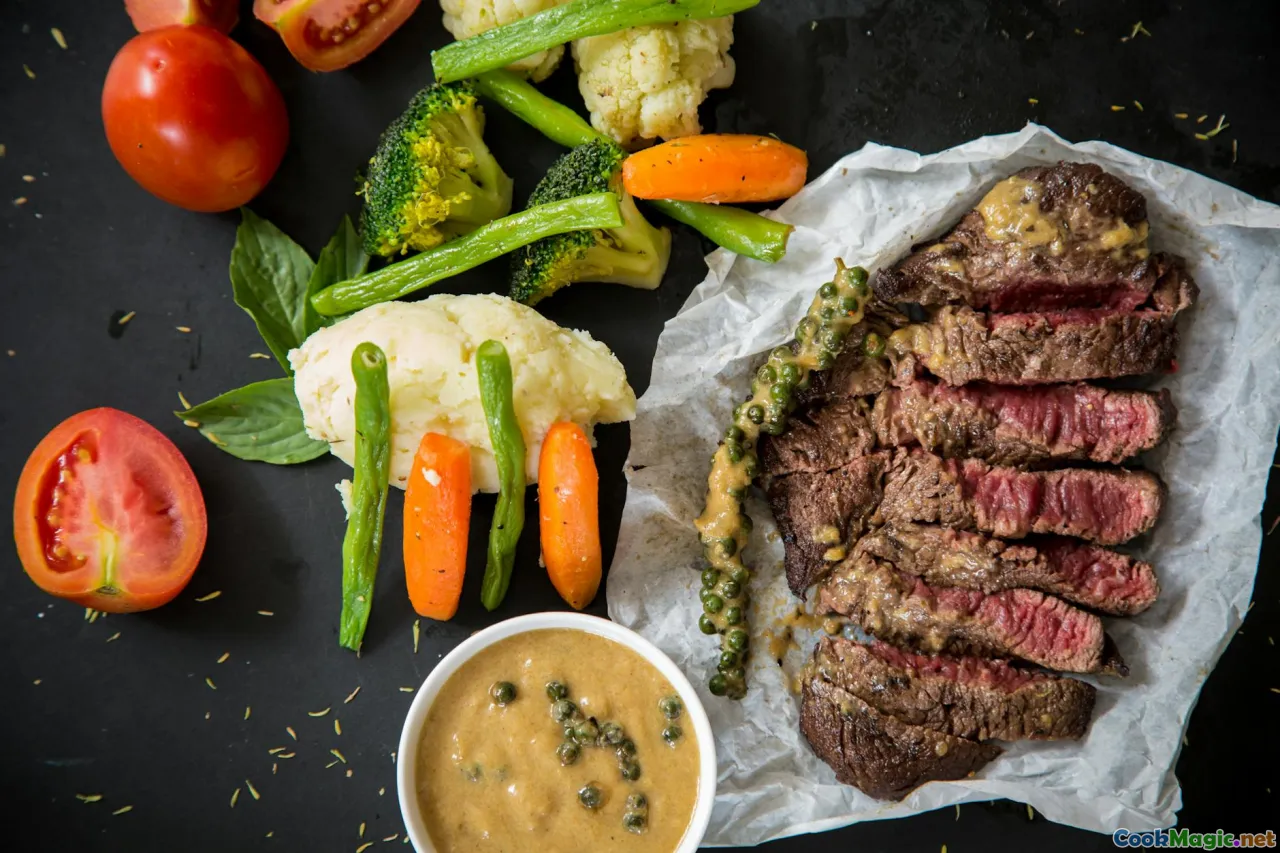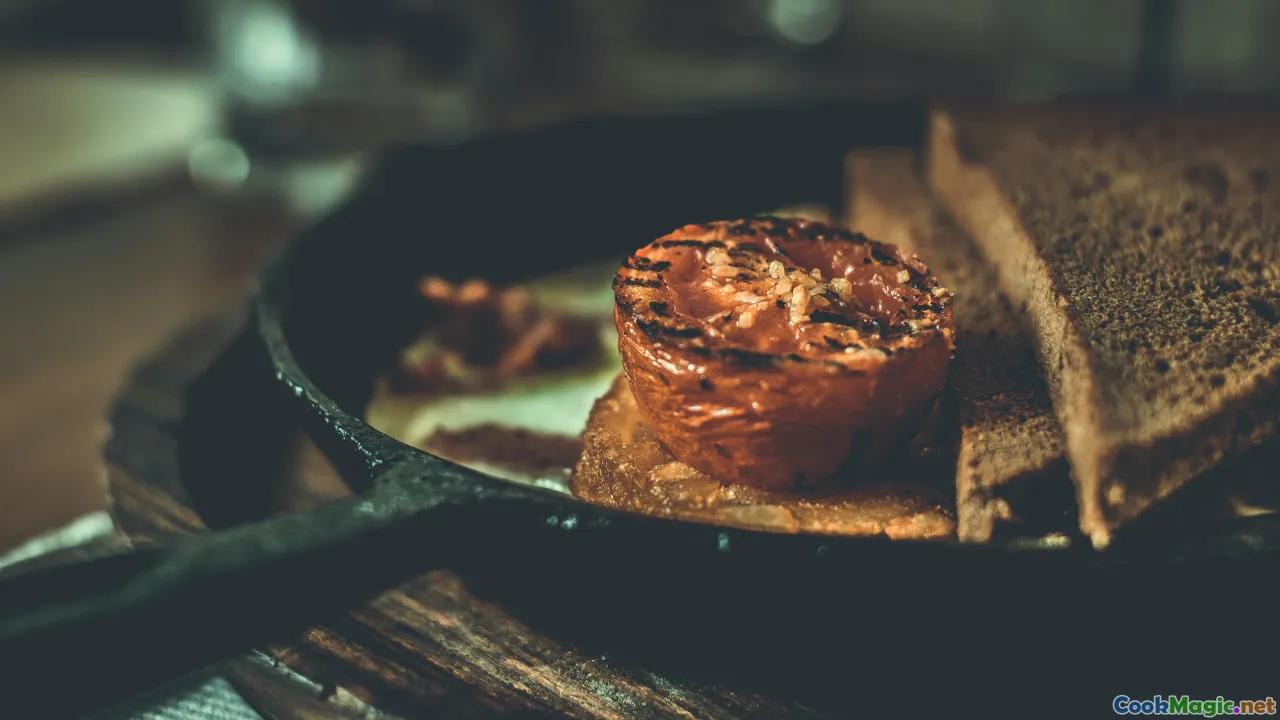
Syta wiejska tarta z mięsem i warzywami
(Hearty Country Beef & Vegetable Pie)
(0 Recenzje)0
1,137
lipiec 18, 2025
Zgłoś problem
Składniki
-
500 grams Łopatka wołowa
(Pokrojone w kostkę o boku 1,5 cm)
-
2 medium Marchewka
(obrane i pokrojone w kostkę)
-
1 medium Pasternak
(obrane i pokrojone w kostkę)
-
1 large Por
(Umyte, przekrojone na pół i pokrojone w plastry)
-
2 pieces łodyga selera
(Drobno pokrojony)
-
2 small Ziemniak
(obrane i pokrojone w kostkę)
-
150 grams Pieczarki
(oczyszczone i pokrojone na ćwiartki)
-
3 cloves Czosnek
(Mielony)
-
1 tbsp Świeży tymianek
(posiekane lub 1 łyżeczka suszonych ziół)
-
1 piece Liść laurowy
-
120 ml Wino czerwone
(Suchy; w razie potrzeby zastąp bulionem wołowym.)
-
275 ml Rosół wołowy
(Lub bulion warzywny)
-
1 tbsp Pasta pomidorowa
-
1 tsp Sól
(Więcej do smaku)
-
0.5 tsp Czarny pieprz
(Świeżo mielony)
-
2 tbsp Masło niesolone
(Do smażenia)
-
1 tbsp Oliwa z oliwek
-
2 sheets Ciasto kruche maślane
(Lub domowej roboty (około 550 g))
-
1 large Żółtko Jajka
(Ubijane z 1 łyżeczką wody (glazura jajeczna))
-
2 tbsp Posiekany Pietruszka
(Do dekoracji)
(Pokrojone w kostkę o boku 1,5 cm)
(obrane i pokrojone w kostkę)
(obrane i pokrojone w kostkę)
(Umyte, przekrojone na pół i pokrojone w plastry)
(Drobno pokrojony)
(obrane i pokrojone w kostkę)
(oczyszczone i pokrojone na ćwiartki)
(Mielony)
(posiekane lub 1 łyżeczka suszonych ziół)
(Suchy; w razie potrzeby zastąp bulionem wołowym.)
(Lub bulion warzywny)
(Więcej do smaku)
(Świeżo mielony)
(Do smażenia)
(Lub domowej roboty (około 550 g))
(Ubijane z 1 łyżeczką wody (glazura jajeczna))
(Do dekoracji)
Wartości odżywcze
- Porcje: 6
- Wielkość porcji: 1 plasterek (około 260 g)
- Calories: 560 kcal
- Carbohydrates: 41 g
- Protein: 28 g
- Fat: 28 g
- Fiber: 6 g
- Sugar: 7 g
- Sodium: 780 mg
- Cholesterol: 82 mg
- Calcium: 85 mg
- Iron: 4.2 mg
Instrukcje
-
1 - Przysmażyć wołowinę:
Na dużej patelni rozgrzać masło i oliwę z oliwek na średnio-wysokim ogniu. Przyprawić kawałki wołowiny solą i pieprzem; obsmażać porcjami, aż będą mocno skarmelizowane. Odstawić.
-
2 - Smażyć warzywa:
Na tej samej patelni, jeśli zajdzie potrzeba, dodaj więcej masła. Smaż por, seler naciowy, marchew, pastinakę, czosnek i pieczarki, aż zmiękną i będą aromatyczne, około 8 minut.
-
3 - Deglazować i dusić na małym ogniu:
Dodaj pastę pomidorową i smaż przez 1 minutę. Dodaj czerwone wino, zeskrobując brązowe przypalone resztki z dna, i niech zredukuje się o połowę. Włóż ponownie wołowinę do garnka razem z ziemniakami, tymiankiem i liściem laurowym.
-
4 - Dodaj bulion i duś:
Wlej bulion wołowy. Przykryj i duś na małym ogniu przez 30-35 minut, aż wołowina i warzywa będą miękkie, a płyn zgęstnieje. Dopraw do smaku; całkowicie ostudź.
-
5 - Przygotuj spód ciasta:
Rozgrzej piekarnik do 200°C (390°F). Wyłóż natłuszczoną formę do tarty o średnicy 23 cm z odpinanym spodem jednym arkuszem ciasta, przytnij nadmiar i nakłuj spód widelcem.
-
6 - Tarta nadziewana i pokryta:
Równomiernie nałóż ostudzony farsz wołowy do formy, usuwając liść laurowy. Zwilż brzegi, przykryj drugim arkuszem ciasta, zamknij i zafaluj brzegi. Zrób otwór parowy na górze.
-
7 - Piec:
Posmaruj wierzch jajeczną glazurą. Piecz przez 28-30 minut, aż będzie złocisty i chrupiący. Odstaw na 8 minut przed wyjęciem z formy.
-
8 - Dekoracja i Podawanie:
Posypać posiekaną natką pietruszki, jeśli chcesz. Pokrój w plastry i podawaj na ciepło z chrupiącą sałatą lub duszonymi zielonymi fasolkami.
Na dużej patelni rozgrzać masło i oliwę z oliwek na średnio-wysokim ogniu. Przyprawić kawałki wołowiny solą i pieprzem; obsmażać porcjami, aż będą mocno skarmelizowane. Odstawić.
Na tej samej patelni, jeśli zajdzie potrzeba, dodaj więcej masła. Smaż por, seler naciowy, marchew, pastinakę, czosnek i pieczarki, aż zmiękną i będą aromatyczne, około 8 minut.
Dodaj pastę pomidorową i smaż przez 1 minutę. Dodaj czerwone wino, zeskrobując brązowe przypalone resztki z dna, i niech zredukuje się o połowę. Włóż ponownie wołowinę do garnka razem z ziemniakami, tymiankiem i liściem laurowym.
Wlej bulion wołowy. Przykryj i duś na małym ogniu przez 30-35 minut, aż wołowina i warzywa będą miękkie, a płyn zgęstnieje. Dopraw do smaku; całkowicie ostudź.
Rozgrzej piekarnik do 200°C (390°F). Wyłóż natłuszczoną formę do tarty o średnicy 23 cm z odpinanym spodem jednym arkuszem ciasta, przytnij nadmiar i nakłuj spód widelcem.
Równomiernie nałóż ostudzony farsz wołowy do formy, usuwając liść laurowy. Zwilż brzegi, przykryj drugim arkuszem ciasta, zamknij i zafaluj brzegi. Zrób otwór parowy na górze.
Posmaruj wierzch jajeczną glazurą. Piecz przez 28-30 minut, aż będzie złocisty i chrupiący. Odstaw na 8 minut przed wyjęciem z formy.
Posypać posiekaną natką pietruszki, jeśli chcesz. Pokrój w plastry i podawaj na ciepło z chrupiącą sałatą lub duszonymi zielonymi fasolkami.
Więcej o: Syta wiejska tarta z mięsem i warzywami
Summary, History & Unique Notes – Tourte Paysanne de Bœuf et Légumes
The „Tourte Paysanne de Bœuf et Légumes“ is the embodiment of French rural comfort food: a robust, golden pastry encasing a rich filling of braised beef and hearty vegetables. Though pies are adored worldwide, in France, savory pies—or 'tourtes'—are traditionally found in both rustic family kitchens and regional patisseries, often serving as testaments to the countryside's bounty and frugal resourcefulness, especially through the winter months when root vegetables are at their finest.
This particular tourte combines tender chunks of beef chuck (a cut favored for its rich flavor and ability to become meltingly soft during braising), a medley of earthy root vegetables such as carrots, parsnips, potatoes, leeks, and mushrooms, all simmered slowly with aromatic herbs and a hint of wine. The filling is then enveloped by a flaky all-butter crust that shatters deliciously with every slice—a texture contrast that defines great French tourtes.
History & Cultural Significance
The roots of the French savory pie reach back hundreds of years, with plenty of historical variations. In the Pays de la Loire, Limousin, and other verdant regions, „tourte“ often references a well-filled double-crust tart. Historically, these pies were convenient ways to use up leftover meats and garden vegetables, stretching small portions over hearty family dinners. The use of beef and robust roots in this recipe makes it a particular fit for colder seasons when the cuisine naturally becomes richer and more filling.
Pies like this were often taken out to the fields as satisfying midday sustenance for peasants (hence 'paysanne'—'peasant style'), convenient to transport and hardy enough to last even without refrigeration. Many French families, particularly in the countryside, still pass down their own variations through generations.
Tips & Notes
- Pie Crusts: You can use a high-quality pre-made all-butter pastry to save time, but if you'd like, roll out your own using the pâte brisée technique. Rest your pastry before rolling for the flakiest results.
- Filling Consistency: Be sure your filling isn't too runny. Letting it cool before adding to the pie shell keeps the pastry crisp and prevents sogginess.
- Vegetable Variations: Substitute or add whatever seasonal veggies you have—rutabaga, celeriac, or turnip also work wonders. Roasting them before stewing adds sweetness.
- Herbs: Thyme, bay, and parsley are classics here, but feel free to add a dash of herbes de Provence for more complexity.
- Wine: The splash of red wine is classic, but if you prefer no alcohol, beef or vegetable broth alone will suffice.
Serving Suggestions & Unique Aspects
Serve piping hot, ideally with sharply dressed greens or glazed garden beans. A glass of light, rustic Bordeaux or a regional Loire red makes for the perfect accompaniment—the wine’s acidity and structure cutting the pie’s richness beautifully. The tourte also keeps well, making excellent leftovers; try it reheated as a hearty work lunch or cold for a French picnic spread.
What sets this 'peasant's pie' apart is its balance—robust yet layered in flavor, rich but countered by gentle herbal notes and the natural sweetness of slow-stewed veggies. Above all, it is a love letter from the French terroir: food meant for sharing, comforting, and uniting around the table.
Chef’s Reflection
Every time I make a tourte like this, I'm reminded of the power of simple, seasonal ingredients cooked slowly and with care. It doesn't rely on expensive cuts of meat or rare seasonings, but wrings extraordinary character from what grows close to home and is readily available. For families seeking tradition and flavor, there are few things better than a slice of this pie on a chilly evening, steam rising in a warm kitchen—bon appétit!
























